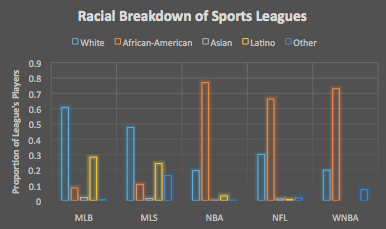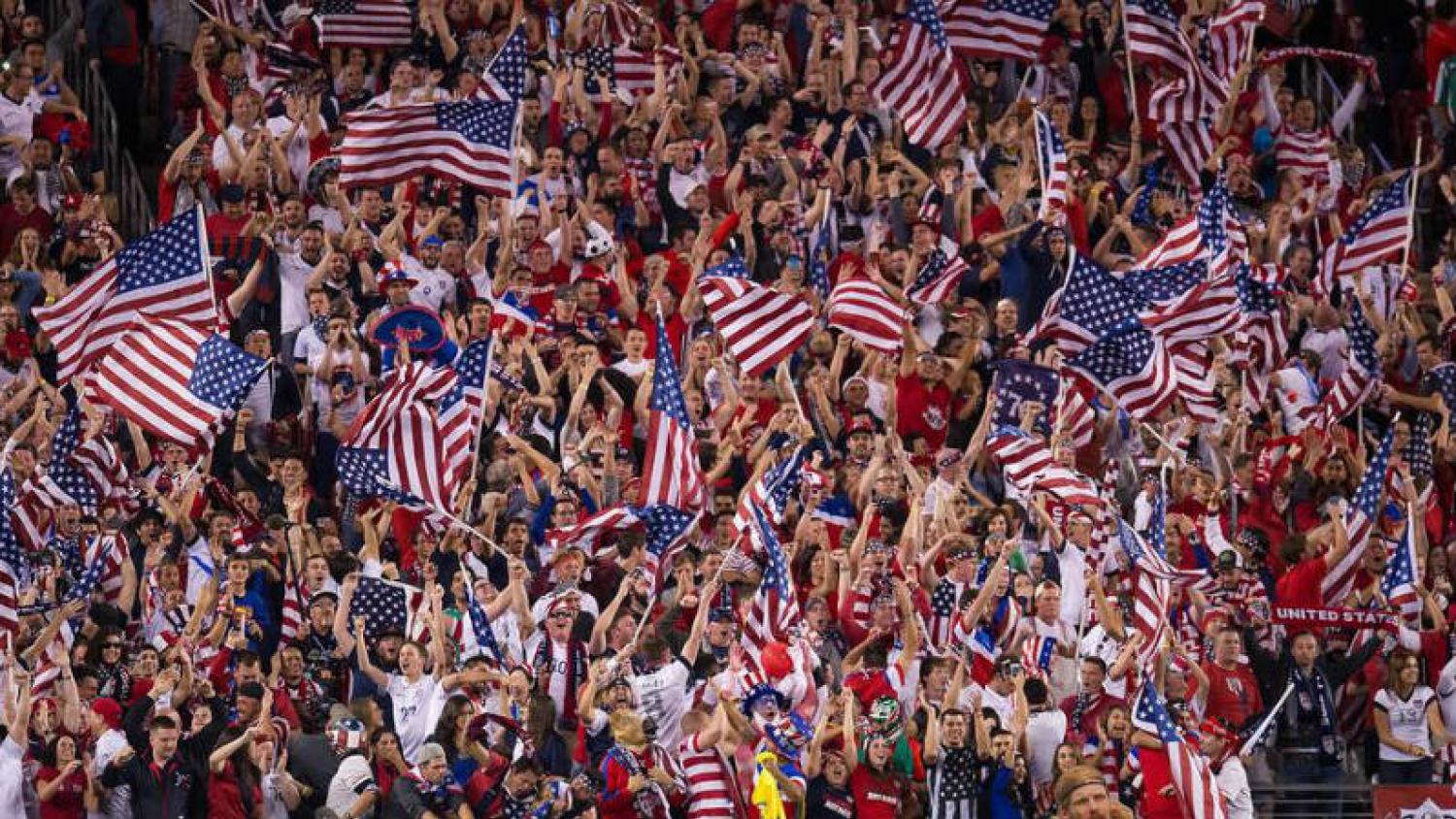Last Wednesday marked the 68th anniversary of Jackie Robinson breaking the color barrier in Major League Baseball. And while baseball celebrates its diversity, soccer in the United States still finds itself at a cross-roads when it comes to diversity. Looking worldwide, it's obvious that the most popular sport in the world is filled with faces of all colors. However, soccer in America still lags behind - perhaps as much in how its perceived as the reality of who's playing the game today.
Manny Otiko examines this perception of soccer in the United States in a recent article for FourFourTwo. We had a chance to speak to Otiko as he researched the article and it's clear that the battle for taking soccer mainstream in America is as much about shattering outdated stereotypes as it is about change in the way the development system and professional leagues work.
In his article, Otiko points out, "In America, soccer is seen as a sport played by middle-class suburban kids. Even the term 'soccer mom' conjures up an image of a white, suburban mother shuttling her pre-teen kids to games in a plush minivan."
There are a myriad of reasons this stereotype exists, from the realities of a club and development system that has historically been rooted in suburbs, to the steep costs of playing with the top youth teams and then in college programs where American players are groomed for the pros. Indeed, in Otiko's article, Sheridan Becker – a self-described soccer mom from Florida – points out that, “If you want to play on a competitive team you are looking at $7,000 (£4,600) per term, not including gear.” And this doesn't even factor in the expense of higher education, should a player want a shot at preparing to play professionally.
Speaking of the pros, the MLS also lags in promoting diversity at the management level. While other leagues, including the NASCAR circuit (which has also been perceived as a sport lacking in diversity), are offering minorities opportunities, the MLS cannot say the same thing today. An article in VICE Sports examines the issue, highlighting that "... the United States continues to lag in its support of black people: an issue that extends to the coaching ranks at the college, professional, and national level. The country's marquee league, MLS, has no black head coaches, and only four assistants."
Take all of these factors together, and it's no wonder we have the biased pop culture image of soccer that we do. Author Franklin Foer digs deeper into this phenomenon in his book How Soccer Explains the World – as VICE Sports also points out – suggesting that "the visible foundation of American soccer has been largely consolidated in the 'yuppie confines' of the upper-middle class."
That may explain why minorities in this country didn't start out playing the sport - because it wasn't meant for them to play. Nevertheless, over the years, the sport has in fact trickled down into urban neighborhoods and has become popular among minorities, especially Latinos in America, who make up around 15% of the population today.
A look at the roster of the 2014 United States Men's National Team confirms that diversity is no longer the exception to the rule in U.S. soccer.
As Otiko says, "The successful side at last year’s World Cup featured several black and Latino stars like Altidore, Everton goalkeeper Tim Howard and LA Galaxy star Omar Gonzalez."
This diversity isn't limited to the U.S. National Team. While the MLS may lack in diversity at the manager level, it's actually the most diverse sport in another respect. As Chris Hoenig highlights in an article for DiversityInc, "There is only one professional sports league in the United States in which at least 50 percent of the players are not of a single race or ethnicity. And no, it’s not one of the so-called 'Big Four.' It's Major League Soccer."
Hoenig goes on to say, "In every other major sports league, at least half of the players are a single race or ethnicity: More than three-quarters of NBA players, 70 percent of WNBA players and 65 percent of NFL players are Black. Major League Baseball is the only other sport close to that measure of diversity: 60 percent of MLB players are white...If two MLS players were selected at random, there’s only a 32 percent chance that they would be of the same race or ethnicity." That's compared to a 66% chance in the NBA that two players selected at random would be of the same ethnicity. All of that said, one can't help but acknowledge that this picture of the diversity of soccer does suggest that the development systems, opportunities and role models for African Americans in American football and basketball are clearly much stronger than in soccer – or, for that matter, baseball.

When it comes to the overall diversity of players, the MLS actually tops the list. (Photo: DiversityInc)
While this is a positive measure of diversity for United States men's soccer, the story isn't quite the same for United States women's soccer. This could point to the fact that things have changed more slowly on the women's side of the game, or that the road is simply harder for professional female athletes in general.
An article from 2011 by the New York Daily News speaks to this struggle for female athletes, especially those who are minorities. In it, Brianna Scurry – an African American athlete who rose through the ranks of U.S. women's soccer in the 1990s – recalls how she struggled to get into the game:
"I completely came in the back window because the front doors were closed to me," she said. Before joining the USWNT, Scurry was a star player at UMASS.
She went on to say that the main reason she started playing soccer was because of her parents and because she lived in a predominately white suburb in Minnesota.
But USWNT coach Jill Ellis said in the same article she sees it changing, especially for young black women.
"I think if you were to look at the rosters of our youth teams, you'll see the growth (of diversity) that's happening," Ellis said.
So, it seems U.S. soccer remains perched at a tipping point when it comes to diversity: on one hand fighting outdated stereotypes about who actually participates in the sport and what it means to be a soccer player in America; on the other hand, up against some very real hurdles that stand in the way of attracting a broader demographic to the sport – especially when it comes to rising through the development system and finding coaching opportunities.
It will only be through a combination of addressing both sides of the issue – the image and the reality – that soccer will pass this tipping point.



